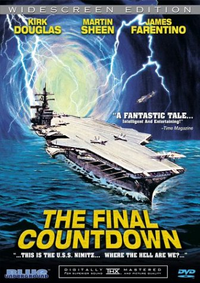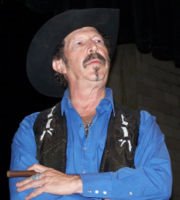| In 1941, a large Japanese strike force fell on the Singapore Naval Base, after British warnings to leave south-east Asia alone fail to persuade them. Singapore had been a cornerstone of British Defence policy in the Far East since 1918. After the Great War, the British government devoted significant resources into building a naval base in Singapore, as a deterrent to the increasingly ambitious Japanese Empire. Originally announced in 1923, the construction of the base proceeded slowly until the Japanese invasion of Manchuria in 1931. The blueprint for the new base was a dock covered 21 square miles - then the largest dry dock in the world, the third-largest floating dock, and enough fuel tanks to support the entire British navy for six months. It was to be defended by heavy 15-inch naval guns stationed at Fort Siloso, Fort Canning and Labrador, as well as a Royal Air Force airfield at Tengah Airbase. Winston Churchill touted it as the "Gibraltar of the East." The works had been completed in 1939, arrived at a staggering cost of GBP60 million. Less than two years later, the Base was completed destroyed on the “day of infamy”. |
In 1941, the moment of truth arrived at Unit 731 after many years of hard work in manufacturing and employing bacteriological weapons. General Otozoo Yamada was about to find out which of his weapons was most effective - the million man Japanese army occupying Manchuria or Germ warfare. In less than twenty-four hours, the decision would be for Germ warfare. But only because Pearl Harbour Rear Admiral Husband E. Kimmel had not received an order from Washington. General George Marshall had cabled Hawaii to raise Mosquito Nets, but the warning arrived too late to prevent the Day of Infamy.
In 1941, a large Japanese strike force falls on Thailand, after American warnings to leave southeast Asia alone fail to persuade them. Although President Roosevelt wanted to join in the war against the Japanese and Germans, the lack of any direct threat to the U.S. kept him out.
In 1941, Imperial Japanese forces invade the Aleutian Islands. Throughout the 30’s, they had gobbled up smaller nations in the Pacific Community of Trade, and they had finally decided the time was right to attack the Soviet States of America. This proved to be their undoing, as the remaining members of the Community of Trade threw themselves against the empire and its reactionary allies, defeating them in 1946.
In 1941, a combined force of naval and air power from the empire of Japan attacked Pearl Harbor, Hawaii. After seeing how unprepared the Americans were for attack, the Japanese invaded the western coast of the country at the end of the year, making America fight a defensive struggle on its own shores. The Axis powers of Germany and Italy conquered Europe and Africa, and Japan, although eventually repelled from North America, ruled the Pacific. The western hemisphere was economically and politically isolated from the east.
In 12-16-7-16-13, Nipponese forces strike out against the Incan capital in Teutehuanoco. For several years, the combined Inca-Oueztecan Empire had been making inroads across the ocean, and the Nipponese people felt that they could halt their disintegrating influence with military power. They were wrong; the war against them ended in their utter annihilation.
In 2694 AUC, the Roman Republic launched a sneak attack against the tiny island nation of Nippon in Asia. The heavily fortified island nation had been threatening the Chinese allies of Rome for a decade, and had recently invaded the province of Manchuria. The Republic couldn’t stand idly by anymore, and its forces attacked Kyoto; the war was over by the end of the next year, and Nippon was contained.
In 4637, Japan, which had been providing material and logistic support to nations attacked by the American Empire in South America, was attacked in the morning by a naval assault squadron. Unprepared for the attack, Japan lost thousands in Okinawa, and declared war against the American Empire the next day.
In 1941, Pearl Harbor, in the Hawaiian Protectorate, was attacked by heathen Shinto from the Japanese Empire. Pope George VI of the Holy British Empire declared a Crusade against them the next day, and all of Christendom attacked the island nation and its Buddhist allies in Asia. The Holy World War led to the establishment of Christian nations across Asia and the Pacific.
In 1941, Neville Chamberlain, fresh from negotiating peace in Europe, declared peace in Asia, as well. He successfully negotiated the Japanese pullout from China on this date. Chamberlain, Prime Minister of Great Britain from 1937 until his death in March of 1942, won the Nobel Peace Prize for his Herculean efforts to promote peace in office.
| In 2006, animal rights activists broke into premises owned by Pappy's Texas Barbecue Chicken, Inc. Five thousand lard-fed battery chickens were released into the wild. |
 General Short | In 1941, General George Marshall sent the famous warning message to Hawaii that morning. It was actually delivered by a young Japanese-American cycle messenger, to General Walter Short, commanding general of the Army post at Pearl Harbour. Rear Admiral Husband E. Kimmel commander actioned the telegram in good time to save the U.S. Pacific Fleet from certain destruction by raising the torpedo nets. |
| In 1980/1941, the US aircraft carrier Nimitz collided with an unnatural storm and the crew were transported from 1980 to Pearl Harbour on December 6th, 1941. Captain Captain Matthew Yelland had to decide whether to interfere with the past and stop the Japanese Fleet from attacking the US base. The true story of the voyage was portrayed in the movie Final Countdown. Played by actor Kirk Douglas, Yelland made the decision to intercept the incoming Japanese attack on Pearl Harbour, but during the attempt, the freak storm returned and sends the ship back to 1980. But this is a a different 1980 where buoyed by easy victory in the Pacific, an unstoppable military had fought the Soviet Union and lost. As the final ends, the question is left hanging, should Yelland have intervened, or let history run its course... |  Final Countdown |
 Kinky | In 2005, deep sleeper agents of the government of |
| In 1941, a young Japanese-American cycle messenger was given a telegram for General Walter Short, commanding general of the Army post at Pearl Harbour The telegram contained General George Marshall's famous warning message to Hawaii, but it was delayed that morning by vital hours. The messenger was sympathetic to the Empire of Japan's mission to bring about a new order in the Pacific. Rear Admiral Husband E. Kimmel commander was not provided with good time to raise the torpedo nets, and the U.S. Pacific Fleet was destroyed. |  General Short |
No comments:
Post a Comment